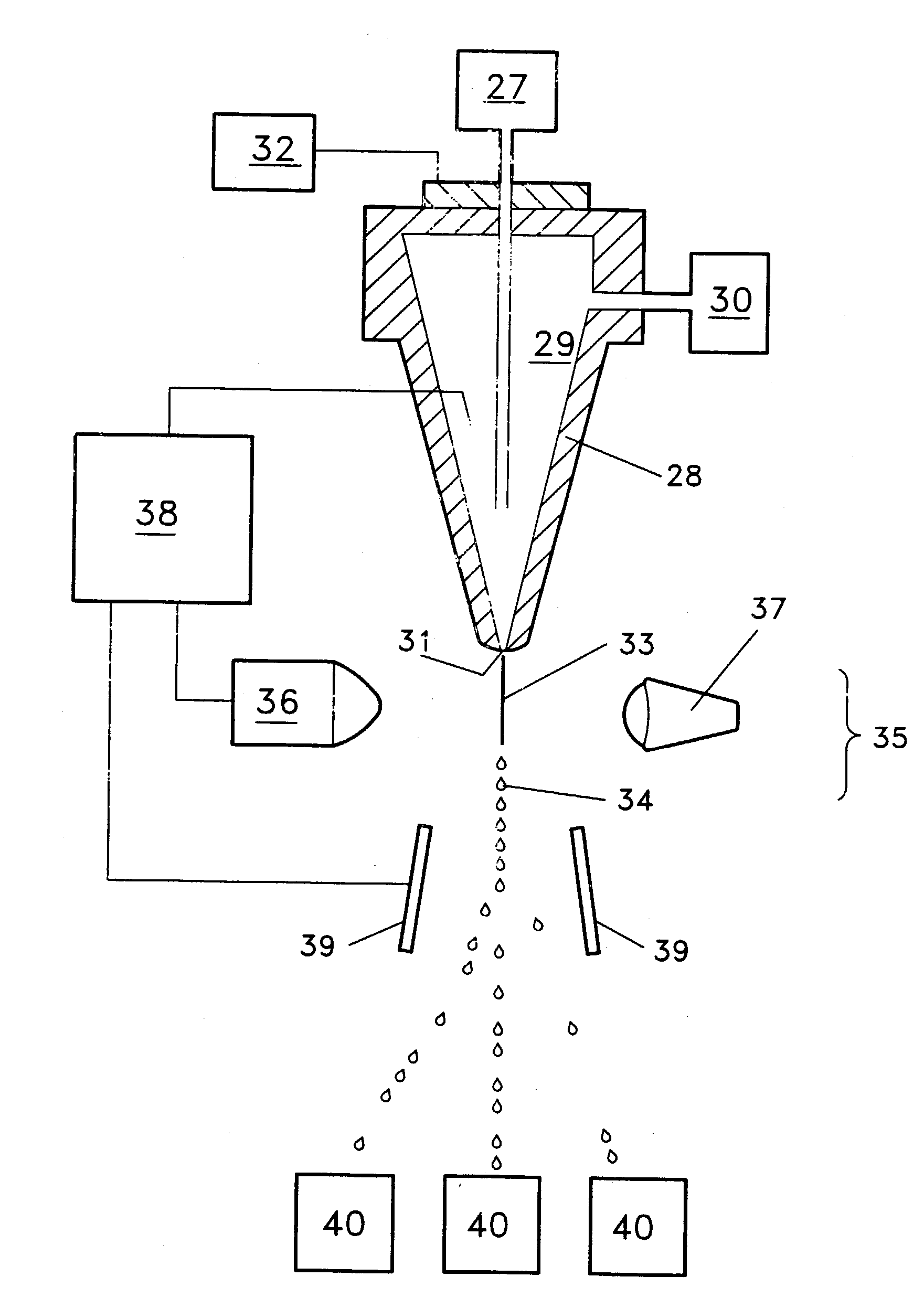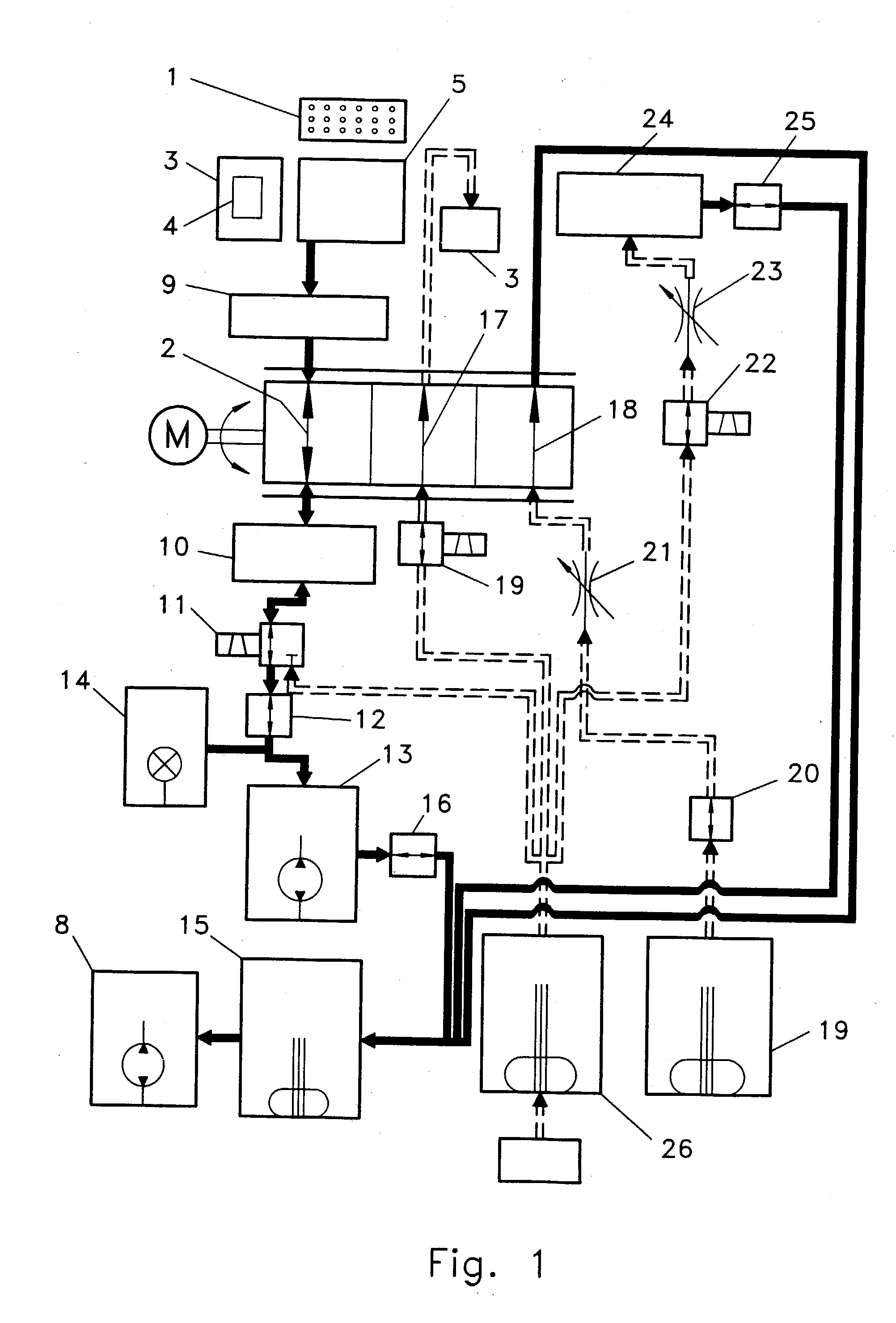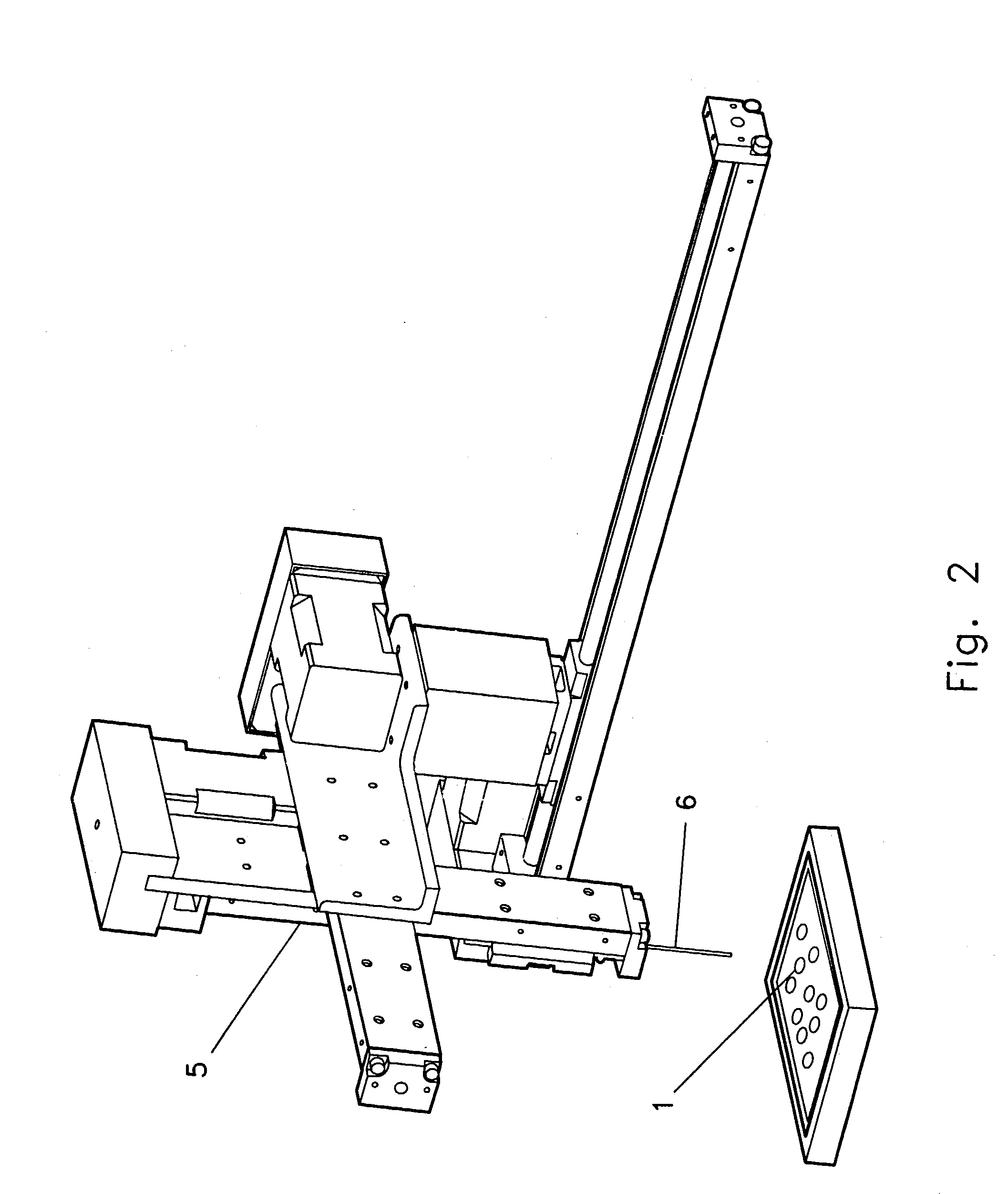Rapid multi-material sample input system
a multi-material and input system technology, applied in the field of material transfer technology, can solve the problems of pulsatile flow characteristics, fluid stream velocity variation, and unresolved significant problems with these conventional material transfer technologies, and achieve the effects of increasing the core width, and reducing the number of significant problems
- Summary
- Abstract
- Description
- Claims
- Application Information
AI Technical Summary
Benefits of technology
Problems solved by technology
Method used
Image
Examples
Embodiment Construction
[0041] The invention involves material transfer technology that apportions discrete amounts of material and introduces the apportioned material into a flow path to provide a plurality of separate materials within a continuous fluid stream that can be delivered to numerous material differentiation technologies for analysis.
[0042] Now referring to FIG. 1, a preferred embodiment of a material transfer invention is shown. A basic embodiment of such a material transfer invention can comprise at least one material (1) having material location coordinates and a selectably engaged flow path (2) at least a portion of which can be fluidicly coupled to a material differentiation system (3). The material (1) transferred by the various embodiments of the invention can be any material that can flow within the selectably engaged flow path (2).
[0043] With respect to some embodiments of the invention, the material (1) can be a liquid, such as, water, solvents, reagents, cell culture media, stains, f...
PUM
| Property | Measurement | Unit |
|---|---|---|
| volume | aaaaa | aaaaa |
| volume | aaaaa | aaaaa |
| volume | aaaaa | aaaaa |
Abstract
Description
Claims
Application Information
 Login to View More
Login to View More - R&D
- Intellectual Property
- Life Sciences
- Materials
- Tech Scout
- Unparalleled Data Quality
- Higher Quality Content
- 60% Fewer Hallucinations
Browse by: Latest US Patents, China's latest patents, Technical Efficacy Thesaurus, Application Domain, Technology Topic, Popular Technical Reports.
© 2025 PatSnap. All rights reserved.Legal|Privacy policy|Modern Slavery Act Transparency Statement|Sitemap|About US| Contact US: help@patsnap.com



